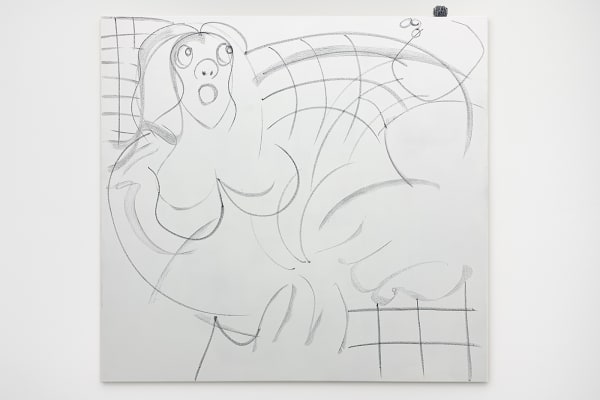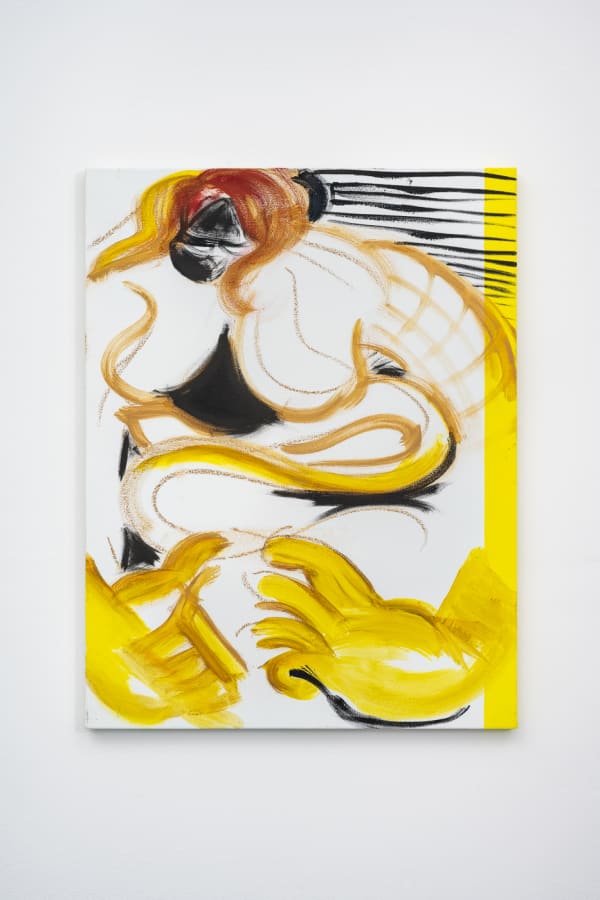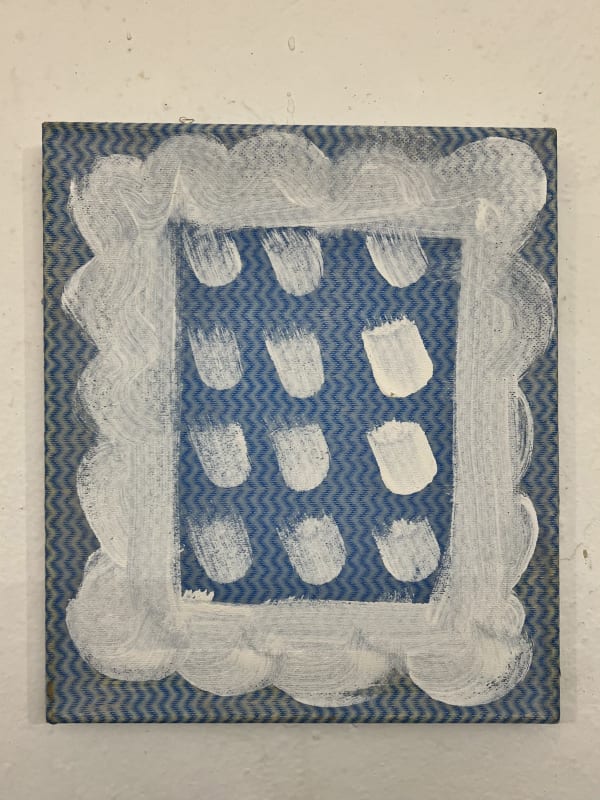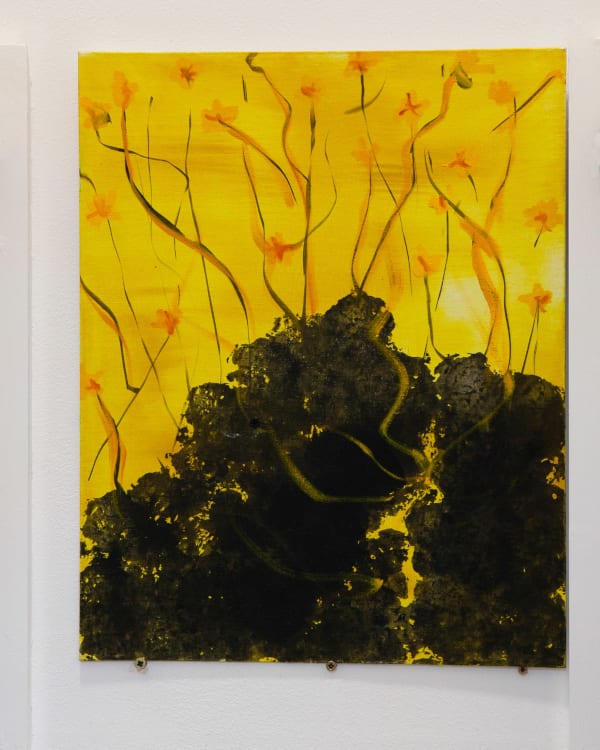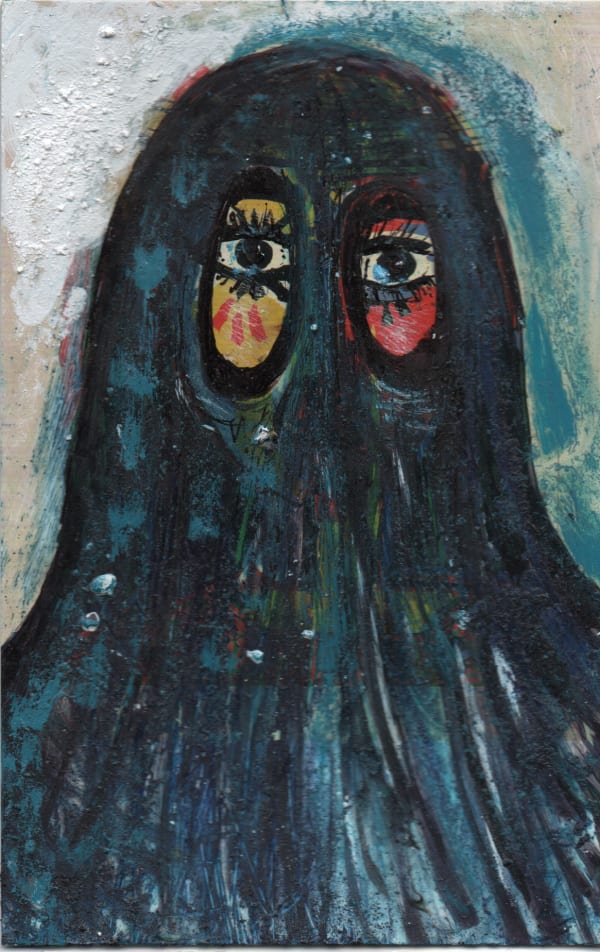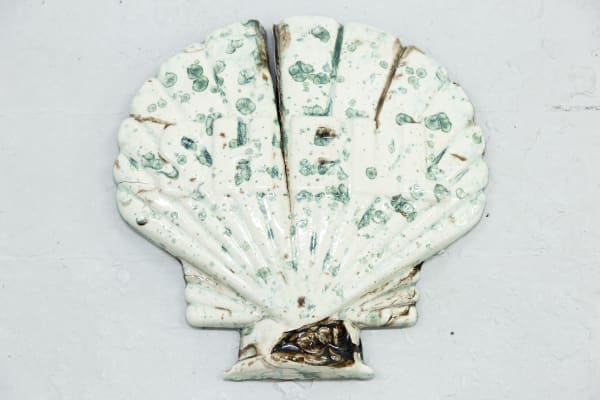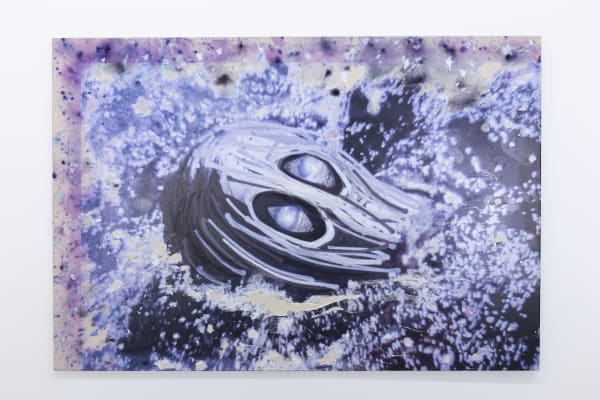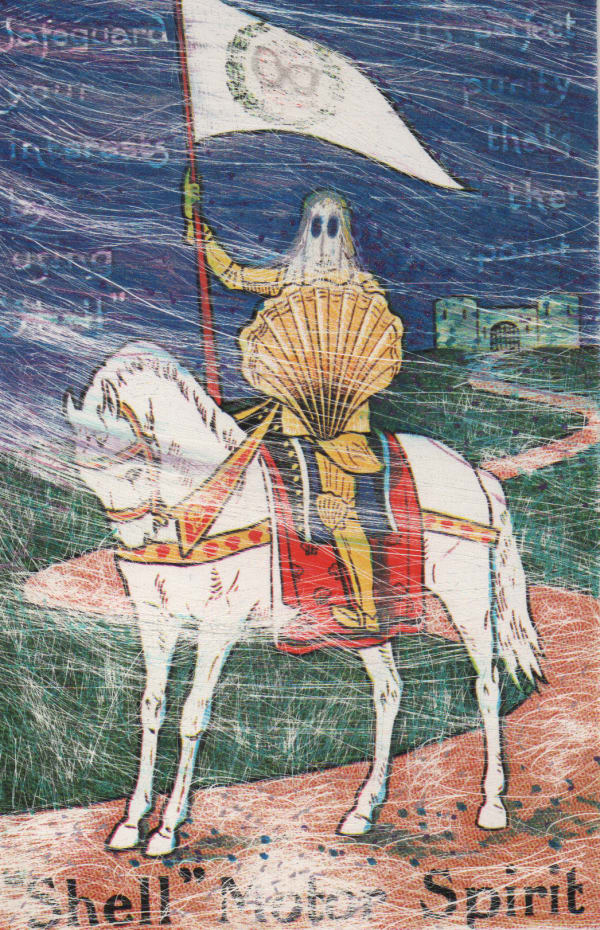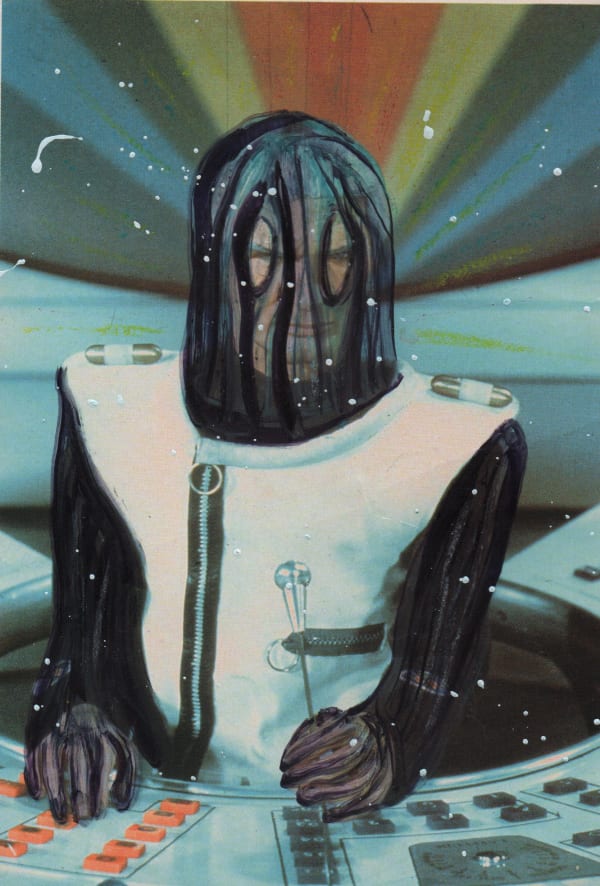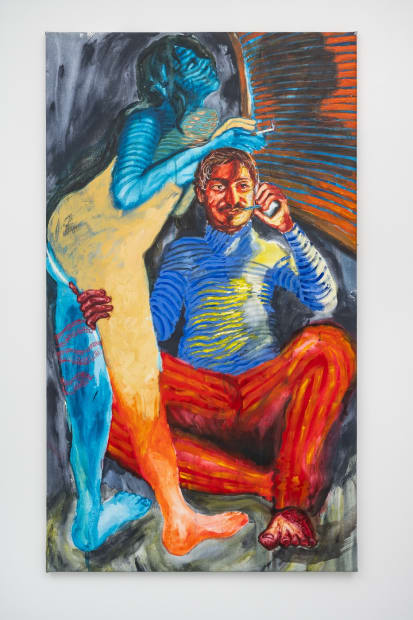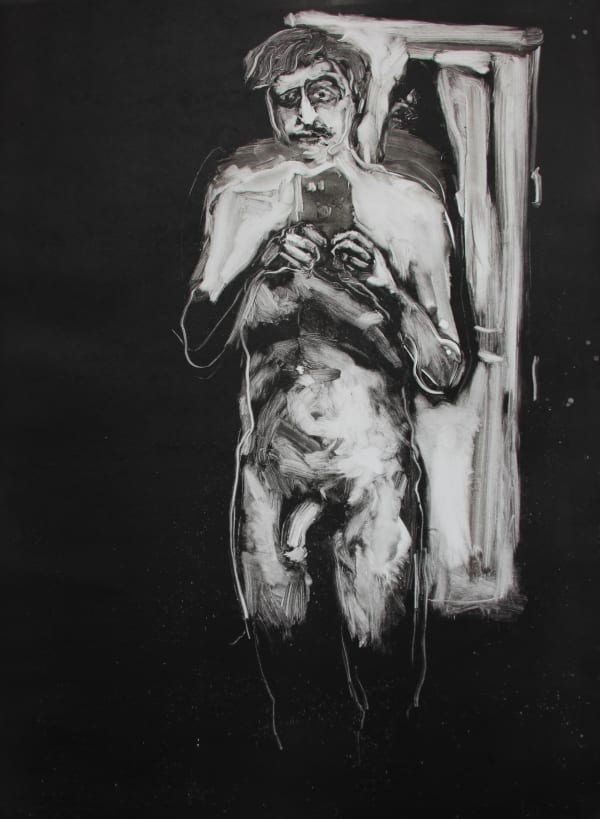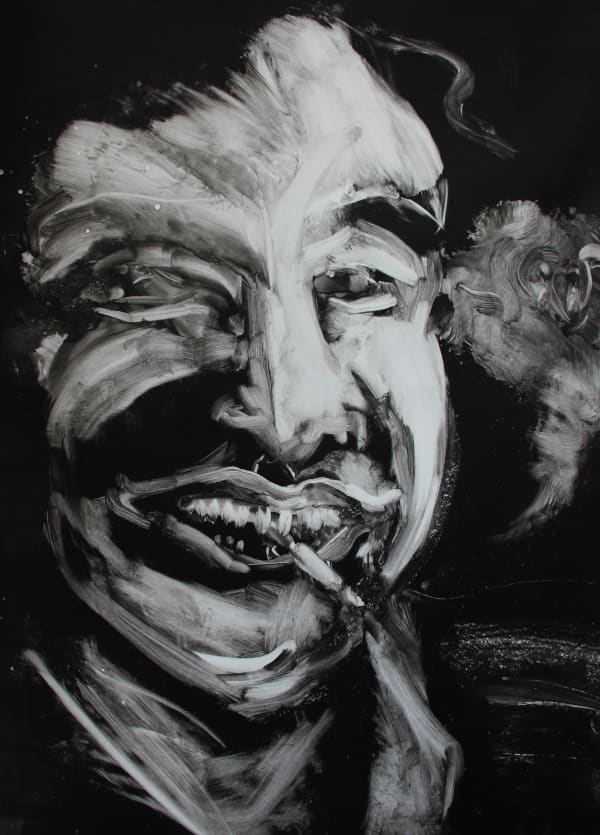-
Saxifrage
Azeri Aghayeva, Camilla Bliss, Max Boyla, Sophie Goodchild and Penelope Kupfer | Curated by Victoria Gyuleva and Natalya Falconer -
Saxifrage: a low-growing plant of poor soils, bearing small white, yellow, or red flowers and forming rosettes of succulent leaves or hummocks of mossy leaves
Saxifrages emerge from rocks (the Latin word saxifraga means ‘stone-breaker'), coming out of dark dens and finding scarce sunlight to blossom. The exhibition creates an analogy between the flourishing of these shapeshifting plants and the artists’ creative processes and ways of seeing. The works featured in the show are influenced by cave-like habits of complete immersion in making, as well as by the digital ‘caves’ of online interaction.
-

Penelope Kupfer, Kiss the Sun, 2022
-

Max Boyla, Dead Or Alive, 2021
-
-
 Max Boyla, Open Your Eyes, 2022View more details
Max Boyla, Open Your Eyes, 2022View more details -
 Max Boyla, Mould, 2021View more details
Max Boyla, Mould, 2021View more details -
 Max Boyla, Look On The Bright Side, 2021View more details
Max Boyla, Look On The Bright Side, 2021View more details -
 Max Boyla, Hell Spirit, 2022View more details
Max Boyla, Hell Spirit, 2022View more details
-
-

Camilla Bliss, Orbital Gulp, 2022 (detail)
-

Sophie Goodchild, The Immortal Bottom Dweller, 2022
-

Azeri Aghayeva, Bekle dedi gitti, 2021
-
About the artists
Azeri Aghayeva lives and works in London. She is a recent Slade School of Art graduate, co-winner of the Bloomsbury Festival Art Competition (2021), and recipient of the Cass Art Painting Prize (2021). She has always been informed by the presence of a lens through her practice, painting from manipulated photographs. Her works explore objects with animated expressions, blurring the lines between inanimate and animate, flattened figures within a fish-bowl atmosphere that collapses perspective. Everything takes place within a room whilst the world looking in is vacant, playing with the push and pull of existence and imagination.
Select recent exhibitions include: Habitat, Contemporary Six, Manchester (2022), Slade Degree Show,
Slade School of Fine Art, London (2021), Virtual II, Go With Yamo, online group exhibition (2021),
Bloomsbury Festival Presents Azeri Aghayeva and Noorian Inam, Bloomsbury Festival, London (solo,
2021), Rome Art Programme, online group show (2020), and Ausgang Vienna, Dessous Gallery, Austria
(2019).Camilla Bliss lives and works in London and recently received an MA in sculpture from the Royal college of Art. She was awarded the Yorkshire Sculpture Park graduate award (2021), and is also a co-founder of the curatorial collective HAZE.
Bliss regularly draws on motifs found in historical craftsmanship, myth and folklore to communicate ideas about the modern world. She places an importance on the handmade and sculptural, yet at the same time references our relationship to digital technology.
Selected exhibitions include: Synthesis, Delphian Gallery x Saatchi Gallery, London (2022); SWELL (solo), 87 Gallery, Hull (2021); Hawks in Her Hair, Alice Black Gallery, London (2021); Final, Not Over - Again, Unit 1 gallery, London (2021); Radical Craft 3, Direktorenhaus, Berlin (2021); Summer Exhibition, The Royal Academy, London (2018), Threads Salon, Turner Contemporary, Margate (2018), and Closed Curtain (solo); Barbican Arts Group Trust, London (2017).
Max Boyla is an artist based in London, where he is currently a postgraduate student at the Royal Academy of Arts (‘23). Prior to this, he completed a Correspondence Course with Turps Banana, London, as well as graduating first class with honours from Gray’s School of Art, Aberdeen. Holding to a tradition that sees painting as a form of illusion, Boyla’s art can be viewed as existing in a perpetual limbo: a place where the limited and real world mingles with the eternal and fictional. Recurrent characters offer a sense of familiarity as they navigate a foreign cosmos shorn of all sense of time and place.
He received the Dewer Arts Award in 2019 and 2020. Selected recent exhibitions include: The Sound of Silence, Royal Academy of Art, London (2021), Interim Show, Royal Academy of Art, London (2021), Disco, Fitzrovia Chapel, London (2021), Somewhere Else For A Little While, Eve Leibe Gallery, online group show (2020), A High Hang, London (2019), and GIFC, Fisher Parish, New York (2018). He also participated in the Sunday Studios Auction in New York in 2020.
Sophie Goodchild lives and works in Nottingham where she is the Graduate Resident Studio Holder at Backlit Gallery. She received a BA in Fine Art from Kingston University in 2015 and studied with the Alternative Art School, School of The Damned, graduating in 2019. In 2021 she completed her MA in Painting from the RCA. She has just finished the Artist in Residence programme at Troy Town Art Pottery and participated in London Bronze Casting Editions in 2021.Goodchild works across traditional mediums of craft within a broader fine art practice. Combining traditionally hand crafted techniques such as felting and ceramics, she responds to the undeniable physical act and action of making. Structures taking centre stage: craft, repetition, trust, territory and rhythm. An entangled order.
Recent exhibitions include: (Upcoming Solo show) Flatland Projects, Bexhill (2022), Sticking Ground, One Thoresby Street, Nottingham (2022), London Grads Now, Saatchi Gallery, London, (2021), and Peach Fuzz, Thorp Stavri x The Factory, invited and curated by Haze Projects, London (2021).Penelope Kupfer lives and works in London. Her critical outlook focuses on questions of identity, selfhood, the family and motherhood under a patriarchal system. Penelope’s practice includes drawing, painting and printmaking as well as curatorial work.
Penelope received a BA Fine Art at Central Saint Martins in 2019. In 2021 she completed her MA in Painting at Slade. She is a recipient of the Audrey Wykeham Prize (2021) and of the Sarabande Emerging Artist Prize (2021).
Selected exhibitions include: (Upcoming) SOL, group show curated by Alexandre da Cunha, Marli Matsumoto Arte Contemporânea, São Paulo (2022); London Grads Now.21, Saatchi Gallery, London (2022), Clifford Chance's Postgraduate Printmaking in London (2021), Slade Runner, ASC Gallery, London (2020).


